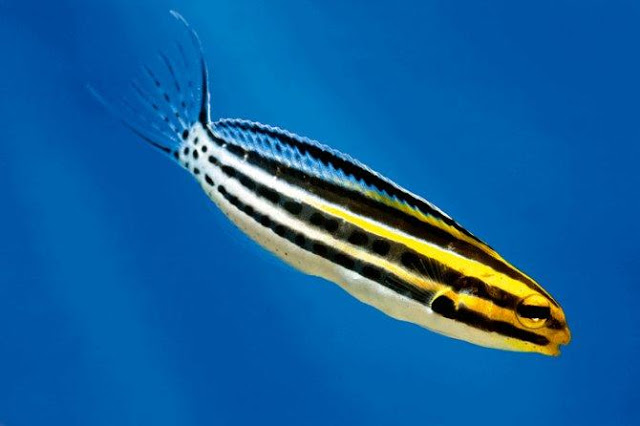

| Online: | |
| Visits: | |
| Stories: |

| Story Views | |
| Now: | |
| Last Hour: | |
| Last 24 Hours: | |
| Total: | |
Fanged Fish with Heroin-Like Venom May Lead to New Pain Killers
A fearless fanged coral reef fish that disables its opponents with heroin-like venom could offer hope for the development of new painkillers.
University of Queensland researcher Associate Professor Bryan Fry said the venomous fang blenny was found in the Pacific region, including on the Great Barrier Reef.
“The fish injects other fish with opioid peptides that act like heroin or morphine, inhibiting pain rather than causing it,” he said.
“Its venom is chemically unique.
The fanged fish’s heroin-like venom could lead to pain treatments.

Image courtesy Associate Professor Bryan Fry
“To put that into human terms, opioid peptides would be the last thing an elite Olympic swimmer would use as performance-enhancing substances. They would be more likely to drown than win gold.”
Fang blennies, also known as poison-fang blennies or sabre-tooth blennies, of the genus Meiacanthus, are popular as ornamental tropical aquarium fish.
“Fang blennies are the most interesting fish I’ve ever studied and have one of the most intriguing venoms of them all,” Associate Professor Fry said.
“These fish are fascinating in their behaviour. They fearlessly take on potential predators while also intensively fighting for space with similar sized fish.
Associate Professor Fry said the unique venom meant, the fang blenny was more easily able to escape a predator or defeat a competitor.
“This study is an excellent example of why we need to protect nature,” he said.
“If we lose the Great Barrier Reef, we will lose animals like the fang blenny and its unique venom that could be the source of the next blockbuster pain-killing drug.”
Contacts and sources:



